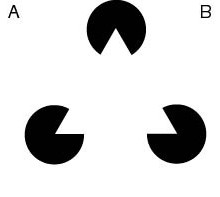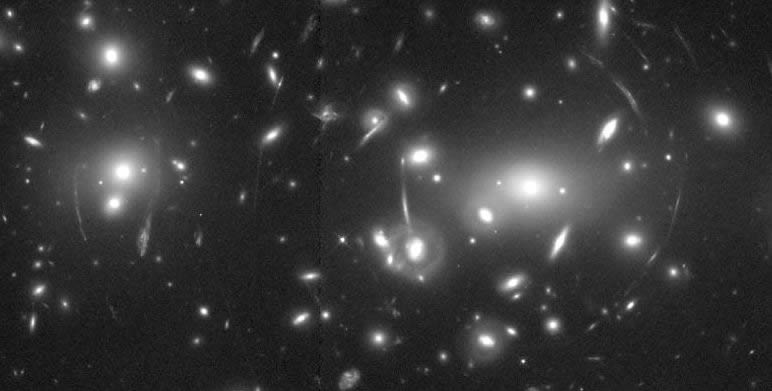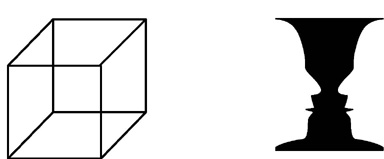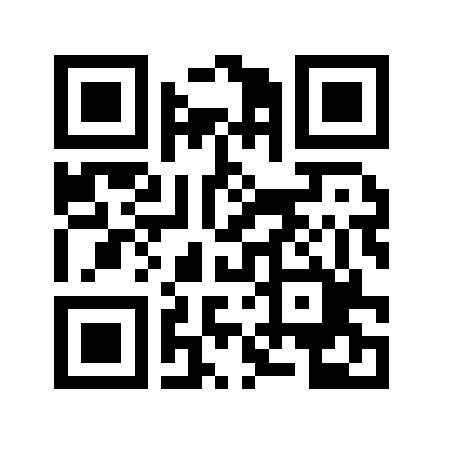The Psychology of Understanding
An academic circumspection:
Is there truth in this story?
By David Freed 06/20/2006
There is a grave stone, in Northern Indiana, with the most fascinating verse engraved upon the front.
It simply says:
As you are, I once was
and as I am, you soon will be.
Short, simple, straight to the point and perhaps the most profound revelation of mortality. We are all going to die sooner or later. So then, the next most important question becomes - Then what? - is there something more? The question for me is not whether there is a God and an afterlife! The question, for me as a man, is if there is a God and an afterlife, and I do eventually meet my maker; will I be able to look Him straight in the eye and shake His hand, or will I be ashamed and embarrassed for who I really am? If there is no God and nothing more, then anything said or done here matters not. It is just the Confusion I Ponder until I expire. However, if there is something more, then how do I or any one make an honest and objective investigation of this possibility. I wish I felt comfortable just sticking to the facts, but lets just look at what the facts are.
Fact # one - Death
We are all going to die. The weight of evidence throughout the history of all mankind supports this truth. Facts can be comforting, once you realize that something is factual, then it is always factual. If it was a genuine fact in the beginning, then it is still a fact today - and - if it is genuine fact today, it was also a fact in the beginning.
Fact # two - The arrogance of man
Without exception, every time mankind has arrogantly thought that he could "Carve-in-stone" any fact, he has been eventually proven completely wrong. Excuse me, but the world is not flat, the sun does not revolve around the earth, and we are not the center of the universe. As our cultural knowledge base (that pool of common knowledge we all carry around with us) grew over time, all of these old world views became obviously incorrect and not well founded. Today, we claim to have better founded "Carved-in-stone" facts, and we call them The Laws of Nature. Constants that rule and define our reality. Things such as the speed-of-light, which is the absolute speed limit of the universe, gravity that gives everything mass, and electromagnetic-radiation that describes the interactions of those masses.
The search for the truth in these Laws-of-nature has grown into many different scientific disciplines, Quantum Physics, Einstein's Special Theory of Relativity, and the new field of String Theory are just some of the most prominent. Some of mankind's greatest minds have struggled to comprehend these issues. Just how can simple minded me, or should I say Arrogant me, dare to Ponder these issues and their meanings or implications?
Fact # three - Time is not linear
Simply put, this is the only relative in Einstein's' Special Theory of Relativity. As Gravity or speed, increases, times slows and time and gravity become measurable at different rates at different locations. Thanks to Hollywood, everyone knows and understands that if you and I traveled to a distant star at the speed-o- light, we would only age a few years, but everyone back on earth would have aged hundreds of years. The only way around it is to bend space with a wormhole, but that too violates a few Laws itself. In any case, if time is measurable at different rates anywhere, at any time, then it just suddenly becomes another variable in the equation of life, and every "Carved-in-stone" definition of my reality suddenly becomes fluid and confusing. It is that Confusion I choose to Ponder in this forum.
The psychology of understanding
Any search for the truth must be conducted impartially and without any bias of cultural background, educational conditioning, and personal attitudes. Twenty different people see an accident and swear to twenty different versions of the event. It is almost as if these minds of ours are biologically stunted from somehow seeing clearly and straight to the truth. In fact, some of us are just wired to see things differently. For example, I knew a girl in college that could draw charactures of anyone in just a minute or two. When asked her secret, she asked in return if I could trace a figure, if I could see it? Of course, I replied. Great then, all I have to do is see the image on the canvas and trace it. How very simple she made it sound! I can not do it! Can you? Although, I do understand her reference to "Seeing it."
Comprehension is such a good feeling, but the intelligent part is in the understanding that throughout history the Arrogance of man has proven itself wrong so consistently we must admit, as a species, we really don't know as much as we think we do. Mankind has been consistently guilty of jumping to the wrong conclusions without enough knowledge to make the most informed judgments. Remember, there was a time, not that long ago, that our species believed that the earth was flat. It was just common knowledge of the era. However, today, we have so much more knowledge about our reality that we can easily see the error in those old beliefs. It is just obvious to us today, because we have a different perspective. As a species, we "See-it" more clearly.
Perspective
The basic knowledge we posses is the framework by which our minds process new information. We know more about space today and the idea of the earth being flat is ridicules. Everyone understands this common knowledge today, but on a personal level, our basic knowledge is the end product of our life experience, effected by our cultural and educational biases. Combined that with the revelation that persity among people today is greater than ever before. No wonder twenty people can see an accident and swear to twenty different versions of the same incident.
Just imagine how a college science professor might report the incident. 'After breaking, the momentum of Vehicle A was too great and carried Vehicle into Vehicle B with tremendous energy.'
The extremely upset student that was just graded poorly by that same professor thought that: 'Vehicle A just came out of no where and blew Vehicle B away.'
Yet, the empathetic lady saw that, 'The driver of Vehicle A tried their best to avoid Vehicle B by swerving and weaving.'
However, the lady standing next to the empathetic lady had lost her husband to a drunk driver years earlier and interpreted the swerving and weaving much differently.
The religious zealot may swear that if it wasn't for the hand of God, some one may have gotten hurt.
However, the wino sleeping buy the dumpster will swear that a bolt of lightning struck the two cars and caused them to explode. Which sounds absolutely crazy and is so easily dismissed, because of the predigest toward the wino's life style and the potential supernatural context of his statement, until the drivers of both vehicles admit that the sun was shinning in their eyes and reflecting off their windshields.
Detectives are trained to take all twenty statements and evaluate them side by side to search for a central truth. In essence, they are trying to look at the reported event from as many different perspectives as possible. I adopt this strategy/methodology in the search for a more meaningful truth. I intend to examine the issue from as many different perspectives as possible. Giving each perspective weight, yet understanding that any one perspective never includes the entire story.
Gestalt theory
Cognitive closure and the risk of jumping to the wrong conclusions.
www.chd.gmu.edu
Gestalt theory originated in Austria and Germany near the end of the 19th century and focuses on the mind's perspective processes. It attempts to describe the way our minds puts together information to visualize a larger whole. The whole become more than just the sum of its parts. When you see an image of a car, you immediately see a car. You are not confused by all of the door handles, antennas, wipers, and tires, you just simply see the whole car.
Gestalt theory attempts to define the mechanism of processing, interpretation, and understanding information into the following steps or processes:
1. Law of proximity - objects or shapes that are close together appear to form groups.
2. Law of Cognitive Closure - our minds seek completeness, especially with shapes that are not closed and seem incomplete to the minds eye.
This is the most fascinating concept to me. Our minds complete incomplete imagery for us. Just look at the img below. Can you stop yourself from seeing a triangle that is absolutely not drawn in the image? Do you also see the spiked sphere that is also clearly not drawn? Our minds are clearly seeing something that is not there. It is an illusion and we all fall for it, we are helpless from doing so, because this is just how our biological brains work.
 |  |
3. Law of Symmetry - our minds tend to group data/information according to logical pattern recognitions.
4. Figure-Ground Separation- for a figure or concept to be perceived it must stand apart from the background.
5. Law of Continuation - our minds tend to continue patterns beyond their ending points.
6. Law of Similarity - objects and concepts will be grouped according to similarities and familiarities.

Is the woman in the image above young or old? The Law of Similarity predicts that, if you work with the elderly all day long, you are more prone to see the the old lady; but if you work at the beach all day, you are more prone to see the beautiful maiden. This also explains why a Catholic, a Baptist, and a Methodist can all read the same scripture and come away with three very different impressions. Each are closing on the information in the framework of the knowledge base, encoding concepts in a similar and familiar terms, and formulation conclusions biased by the heritage they bring to the equation.
But after understanding the image better, our mind's eye has
no problem seeing both img clearly. This is referred to as the multistability
of closure. The phenomena also explains why religious thinking can be the same
for years and years, until some one charismatic sees it differently. Others
begin to see it as well, and eventually another new denomination is born. Just
look at the following two figures. The box both angels up and down and the two
faces are easily recognized as a vase.
So not only does our mind eye see things that are just not there and draw incorrect conclusions, but also we are extremely capable of seeing the same thing in multiple ways. As stated, I am fascinated by the biological mechanism of continually misinterpreting information and drawing the wrong conclusions. Especially, as mankind Arrogantly strives to comprehend the tremendous scale of our reality.
The universe and the whole picture of reality

In our attempt to consider multiple perspectives, we can not dismiss the volumes of collected scientific data. If there is one central truth to my reality, then no actual factual data can contradict that truth, regardless of its origin, or presentation. Just consider the revelations of orbital mechanics, the fundamental mathematical expression of Newtonian Physics. This is the math that explains the relationships of the planets orbiting around the sun and it can predict the location of any orbiting bodies at any time. This is the math that NASA uses to plan the trajectories of spacecraft that target moving orbital objects with great precision and accuracy.
However, this is also the same math that just cannot explain the relationships of galaxies to galaxies, unless 96% of the mass of the universe is missing. Currently, scientist are actively looking for all this missing matter, affectionately called Dark Matter. It must be dark, because we cannot see it with our telescopes. Just stop and think about it, with all our telescopic technology the best we can see is limited to visable light, and some extremes on either side of that spectrum. Just Ponder how much more we just do not know. The search for Dark Matter has opened new doors of investigations, such as the mysterious influences of Dark Energies and the multidimensional possibilities of String Theory.
The exciting aspect, for me, is that if 96% of the universe is unknown, then at best, we only have a misguided handle on only 4% of our own reality. No wonder any attempt to carve facts into stone has always ended in a submission of Arrogance. Which brings us to acknowledge fact number four in our search:
Fact # four
Were are only aware of a very small
percentage of our own reality
and we are biologically challenged
to understand it.
No matter what knowledge we accumulate through life, we are still that animal our genetic material encoded. Where does instinct come form? How about the desire to reproduce and survive? Are they not evidence of a genetic memory? Does not our genome encode these trait to us? Look at the some of the many conclusions reached by the Minnesota Twin Family Study, 'Co-twins seem to have about as good a chance of being similar to their co-twin, in terms of personality, interest and attitudes, regardless if they were raised together or apart. This leads us to believe that the similarities between twins are due to genetic relationship, not environment' (www.psych.umn.edu/psylabs/mtfs/special.htm.)
Doesn't this indicate that we, as a species, are a programmable commodity and our DNA is the program. Whether it is the end result of natural selection, or direct intervention, could there be a genetic imprint that prevents us from seeing the obvious? Call it what ever you want, it does seem that we are biologically challenged to see things as they really are.
Ponder this ancient text, dated from around 250 B.C. and written by unknown Egyptians: "Then Adam wept and said, 'O God, when we dwelt in the garden, and our hearts were lifted up, we saw the angels that sang praises in heaven, but now we do not see as we were used to do; nay, when we entered the cave, all creation became hidden from us.' Then the Lord said unto Adam, 'When thou was under subjection to Me, thou hadst a bright nature within thee, and for that reason couldst thou see things afar off. But after thy transgression thy bright nature was withdrawn from thee; and it was not left to thee to see things afar off, but only near at hand; after the ability of the flesh; for it is brutish.'" (Unknown author, The forgotten books of eden - the first Book of Adam and Eve, 1980, p 9, Gramercy Books, New York.)
Just recently, scientist have claimed to have mapped the human genome, yet they call 96% of our DNA structure as useless Junk DNA. Sounds a little Arrogant to me, but correlates well with the revelation that we are only aware of 4% of our own reality. I Ponder if these are the same scientist, that have told us all from early childhood that we only use 10% of our brain anyway.
Belief systems
Genetic imprinting of interest and attitudes has a profound impact in our belief systems. Beliefs are powerful biases in interest and attitudes and are difficult to ignore. How many time has mankind refused to accept something new because of perceived conflicts with their belief systems. Many people are so quick to say, 'I can't believe in Aliens or life on Mars, because it isn't in the Bible - or - I can't believe in God, because the Bible might be mistakenly transcribed or translated.' It is truly hard to be intelligent as a species, when the power of our attitudes and belief systems are allowed to strangle our ability to be open minded and objective.
Therefore, I separate my belief system into two parts. First, there are those very few, but very important, things that I personally accept on faith alone and define who I am. These things are personal to each of us and are not open to debate. Everything else is Cosmology and commentary on reality, which I love to Ponder and is the intent of this exercise, which may, or may not, impact those things I take on faith alone.
The exploration of our cosmologies need to be conducted in an intelligent manner that takes into account our genetic memories, biological limitations, cultural and educational conditioning, as well as our attitudes. Additionally, and equally important, it must take into consideration as many different perspectives as possible to weed out the central truth.
But which perspective to consider?
Remember the truth about facts. They were true in the beginning and they are still true today. The goal is to uncover as many facts that have remained true over the test of time and descern if they point toward a central truth. I think we are all comfortable with the framework of our cultural knowledge base today and have volumes of scientific data to document. But which facts were true in the beginning? Facts of today must also be the facts of yesterday. So the next step is to seek these facts from the myths, legends, and stories of our beginnings.
We could start our quest anywhere, but since this author, and most of my target audience, is of Judeo-Christian Heritage, in some form, I will begin with the easiest access and the most common ground. The Holy Bible contains stories of our creation and our prophetic end. It is a good source of ancient thinking and historical documentation. There is an exhaustive volume of pre-existing commentaries, both pro and con, to supplement the Bible text.
Taken as one of many perspectives and weighed accordingly in our detective quest. Understanding that any one perspective never contains the entire story and are many times wrong in detail. Remembering also, that the Bible is one of the oldest and most rewritten, and possibly revised, documents in existence. Every argument about transcription and translation errors must pertain to this old text in spades. Yet consider the authorship od source.
Most ancient texts are men writing about their realities. Men witnessing to their perspectives as to then current events. However, only one source stream of information is from the outside in. or at least claims to be - the inspired Word of God. Then why is the language so ambiguous? Why is it so hard to interpret and understand? Perhaps our species is genetically programmed for Confusion, or there are just too many details to consider that it becomes overwhelming. Therefore, we must take guard about becoming sidetracked down dead end trails of never ending trivia
Can't see the forest because of the trees
We have all heard this statement and understand its implications. Yet this is exactly how Sunday Schools and Churches teach the scriptures - one verse at a time. Biblical Scholars even memorize it one verse at a time. However, let us remover ourselves from the trees of inpidual verses and look at the Bible Story as one giant forest, perhaps containing one giant message. So let us consider the Bible Story , and all evidence, from our larger perspective. A cosmologically based academic perspective.


